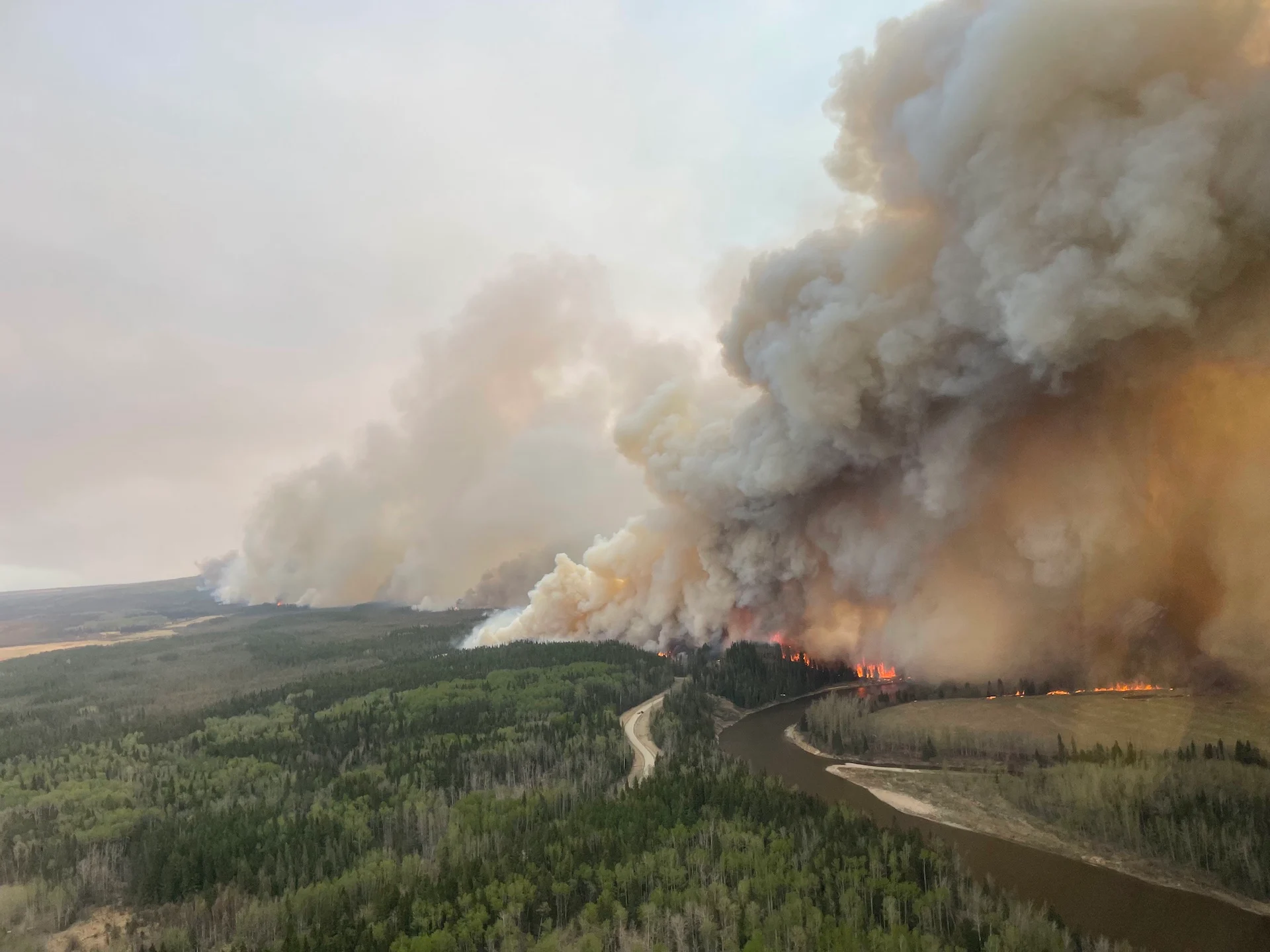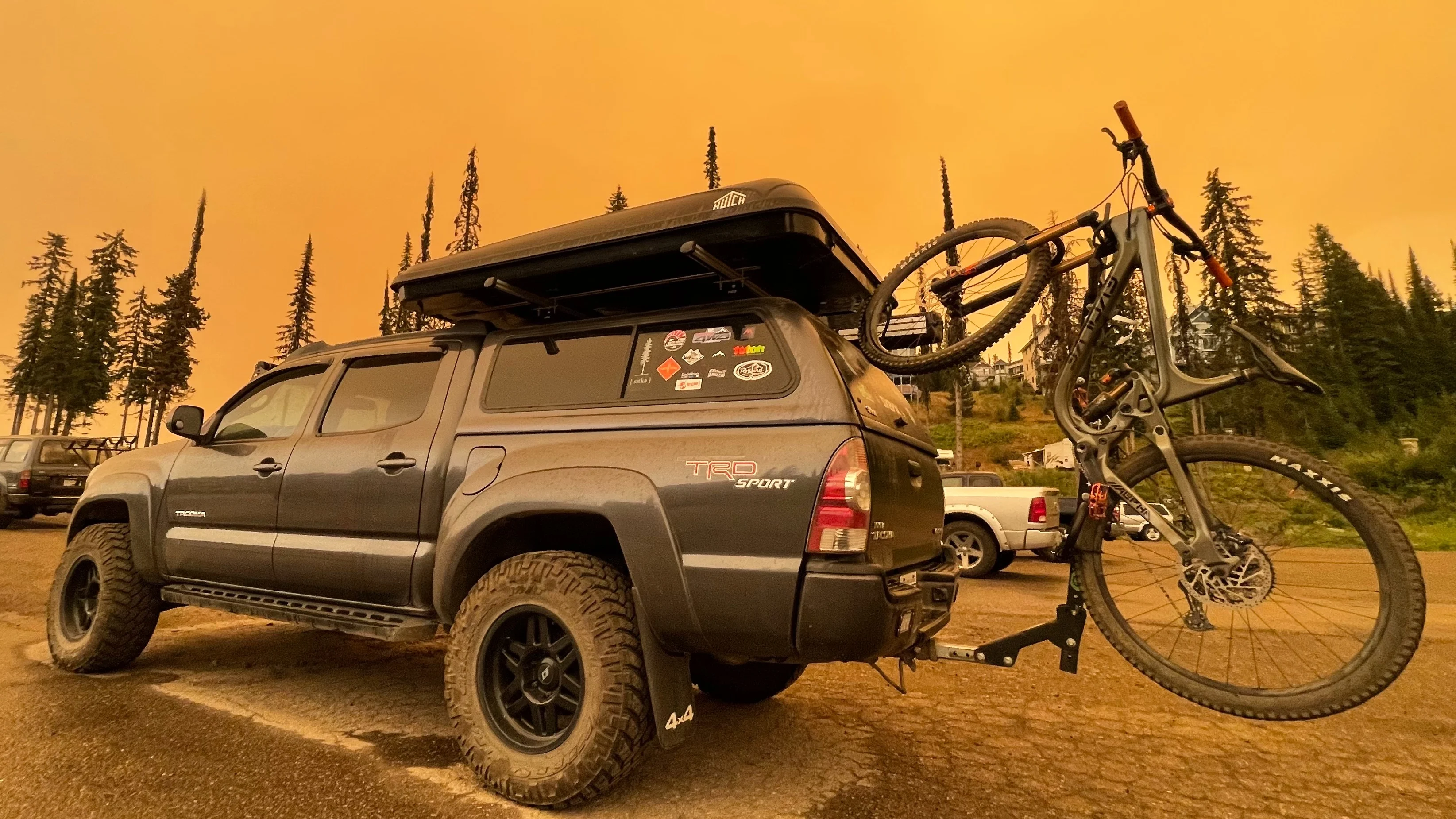
How climate change ‘loads the dice’ for severe wildfire seasons in Canada
From the jet stream to El Niño, many factors fed into the wildfires that have spread across Canada. While climate change isn’t solely to blame, the heat and dryness it brings set the stage for the long-running blaze.
More than 2,400 wildfires have burnt more than 4.7 million hectares of land in Canada so far this season. This has blanketed much of the country (and parts of the United States) in smoke. Many people, including Prime Minister Justin Trudeau, laid the blame for this particularly dour spring on the shoulders of climate change.
It’s largely believed that climate change is playing a role in the wildfires this year. However, it’s also important to understand how it’s interacting with the other factors at play, and to bear in mind what is known about how climate change could be affecting those other factors.
It’s still really smoky. How much can I blame climate change?
It’s not 100 per cent correct to say that everything Canada is experiencing this year is due to climate change, rather that climate change is setting the stage for this particularly difficult fire season.
In a video interview, Chris Scott, chief meteorologist with The Weather Network, said that one factor is the jet stream, a stream of fast moving air in the atmosphere that drives many weather systems in the country. Climate change could impact jet streams by weakening and ultimately warping them, though it’s not confirmed.
This year, over Canada the jet stream has been particularly weak, meaning that the country isn’t seeing “big, vigorous storms,” that would otherwise help douse the flames,” he told Chris Murphy, a Weather Network meteorologist, in the video.
“The jet stream is the great director in the weather drama we see on a daily basis. It’s probably the weirdest jet stream I’ve seen in Canada, late May into June.”
They’re both meteorologists named Chris?
Stay focused.

NASA Earth Observatory satellite imagery of wildfire smoke from Canada blanketing parts of the east coast. (NASA)
OK, so, basically, climate change + X = bad news?
Another factor is that the world has cycled away from a cooler La Niña climate pattern towards a much warmer El Niño. Hotter temperatures can lead to more dried out plant matter which can, in turn, lead to more fuel for fires. The verdict is out on whether or not climate change is impacting this cycle.
Some things are easier to attribute to climate change. For example, in Alberta, climate change is poised to make the province drier and hotter. This means there’s more dead plant matter to act as fuel, potentially causing more wildfires. While many of the wildfires across the country are human-caused, climate change may also increase the severity of storms, meaning there could be more lightning to start fires.

A satellite captures wildfire smoke on May 16, 2023. (NASA EarthData)
On the opposite side of the country in Nova Scotia, this year looked pretty similar to Alberta in terms of factors leading to the wildfires. However, there were other things at play as well. For instance, Hurricane Fiona killed a lot of trees, meaning more flammable deadwood. While hurricanes happen naturally, climate change could be increasing the severity of storms, like Fiona, in Atlantic Canada.
So it’s not that climate change is directly causing these events, rather some of its impacts are setting the stage for these events to be more severe.
I’d like a metaphor. Can you give me a metaphor?
With climate change, it’s not that every single type of weather experienced in Canada gets worse. But certain types of weather end up being favoured, according to Scott. He compares it to rolling a set of dice.
“So you’re thinking about rolling dice. It’s not even anymore. You start to look at the sides of a die, and one is fire and one is coldsnap, well, fire becomes more likely to come up,” he said.
This doesn’t mean the whole country is going to ignite, but when Canada’s boreal forest warms up “you set the conditions” for these wildfires. This is likely going to continue into the future, he said, adding, “If I was investing in a long-term stock, and smoke was a stock, I’d be buying smoke.”
That’s two metaphors. But, anyway, how are humans to blame for this?
Human activities such as burning fossil fuels emit greenhouse gases, which warm the earth’s atmosphere, in turn warming the earth and throwing a bunch of natural processes out of whack. One recent paper actually posits that “the big 88,” a group of 88 large emitters across the globe, are responsible for nearly 40 per cent of the land burnt in western North America’s wildfires between 1986 and 2021.
There are other factors at play as well. For instance, Canada’s forests store a great deal of carbon. When wildfires hit they can also get worse at sequestering it if, for example, multiple fires hit the same space year over year, killing young trees before they can put out seeds, or by killing all the seeds in the ground. Particularly bad fires can even strip all the organic matter out of the soil, making it a hostile place for forests to regrow.

Smoke from British Columbia's 2021 wildfire season seen in the Okanagan. (Supplied by Ryan Van Veen)
And this is bad for us?
Well, yeah. For people who enjoy summer, this level of heat and smoke is not ideal. It makes doing things like going for a bike ride or a hike much harder. For kids, it could mean less time outdoors, hanging out with friends or learning about the natural world during their summer break.
There’s a slew of negative impacts as well in terms of health. The fine particulate matter in the smoke, PM 2.5, is particularly bad for human health because it can get deeper into the lungs. Some of it could even get into your bloodstream, which is a terrifying concept. Anyway, PM 2.5 can damage lungs and, in severe cases involving people with pre-existing diseases, even cause non-fatal heart attacks or death.
Could you sum it up for me?
In the interview with the two Chrises, (Chris) Murphy said that this year is “an ominous sign of things to come.”
Watch below: How climate refugia are saving animals
Thumbnail Image: Wildfires are spreading smoke across the province of Alberta. This aerial shot was taken in the province in May, 2023, one of the busiest wildfire months on record. (Alberta Wildfire/Twitter)












